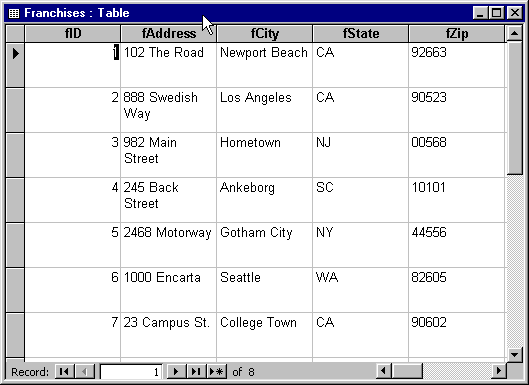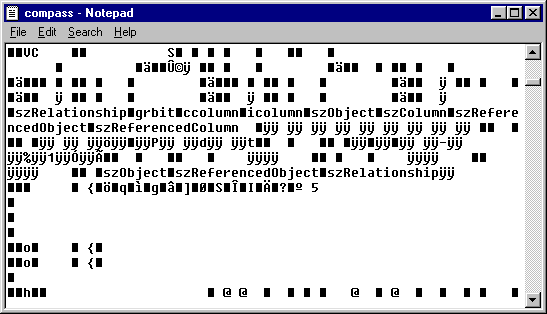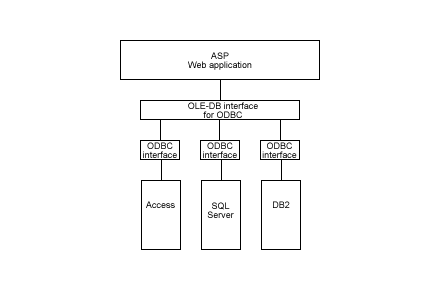|
Interfacing with the database
Data stored in a database is normally in a proprietary format in the same way text in a word-processor file is in a proprietary format. For example, here's what part of a Microsoft Access table looks like in Access:

Here's what the same database looks like in Notepad:

Both your Web application and UltraDev face the same problem as Notepad or any other application trying to access data in an unknown format: the application is unable to decipher the data. A software interface is needed between the application—whether that application is your Web application or UltraDev itself—and the database allowing the application and the database to talk to each other.
Three common interfaces let applications communicate with databases. The first is called Open Database Connectivity, or ODBC; the second is called OLE-DB; and the third is called Java Database Connectivity, or JDBC.
The job of these interfaces is to act like language interpreters at diplomatic functions. For example, when a speech is given in English at the United Nations, one interpreter translates the speech for French-speaking delegates and another interpreter translates the speech for German-speaking delegates. Similarly, you use one interface for OLE-DB-speaking applications, another interface for ODBC-speaking Web applications, and still another interface for JDBC-speaking applications. JSP applications are JDBC speakers, ColdFusion applications speak ODBC, and ASP applications speak OLE-DB.
ASP applications are also fluent ODBC speakers thanks to a built-in OLE-DB/ODBC interpreter. For example, suppose you want your application to communicate with a Microsoft Access database by using a certain ODBC interface. In ASP, if you specify only the ODBC interface and no OLE-DB interface, by default the application will use an OLE-DB/ODBC interpreter to translate the OLE-DB into ODBC, then it will use the ODBC/Access interpreter you specified to translate the ODBC into something Access can understand.
The following illustration gives you an idea of the process:

Note: SQL Server and DB2 are server-based database applications from Microsoft and IBM respectively.
At design time, UltraDev communicates with the database too—for example, to populate some of its dialog boxes with information about the database (also known as "metadata"). In the following UltraDev dialog box, both the Table pop-up menu and the Columns text area are populated with metadata retrieved from the database:

Unlike ASP or JSP Web applications, which can only communicate with a database using a specific interface (or combination of interfaces), UltraDev as an application in its own right can communicate directly with a database using any of the three interfaces: ODBC, OLE-DB, or JDBC.
|